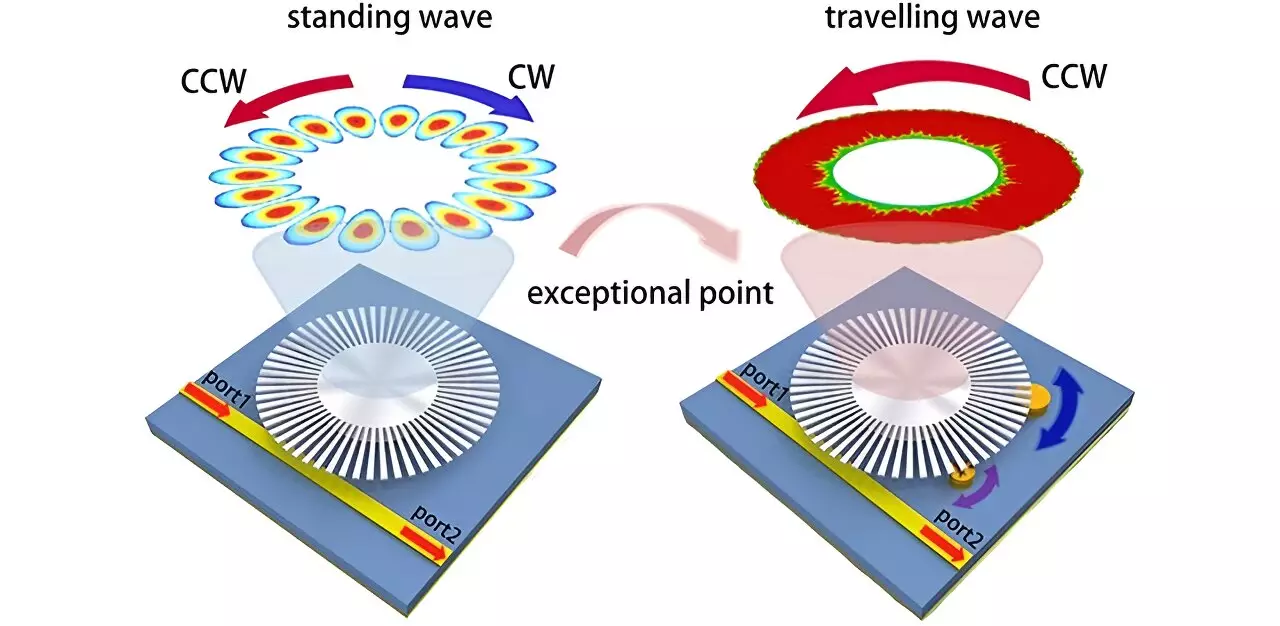Recent advancements in the realms of photonics and materials science are shaping the future of sensor technologies, revealing capabilities that were previously unimaginable. Central to this evolution is the exploration of non-Hermitian physics, which presents new pathways to manipulate light and dramatically increase sensor sensitivity. A pioneering study highlighted in *Advanced Photonics Nexus* showcases a novel sensor design that harnesses exceptional points (EPs) to achieve remarkable sensitivity levels. This development stands as a testament to the transformative potential of contemporary research in this field.
Exceptional points are a type of spectral singularity characterized by the merging of eigenvalues and eigenvectors, and they play a pivotal role in enhancing the operational efficiency of optical sensors. Traditional EP-based sensors, notably those utilizing whispering gallery mode (WGM) microtoroids, have set a foundation for improved sensitivity over standard sensors. However, these established devices have their own sets of constraints, chiefly the fixed nature of their EPs post-manufacturing, which complicates fine-tuning efforts. Furthermore, these conventional systems often struggle to detect minute entities as they typically operate within a limited frequency range, which can diminish their effectiveness in certain applications.
The newly proposed sensor offers a solution to these limitations through the integration of a single spoof localized surface plasmon (LSP) resonator. This mechanism mimics the properties of localized surface plasmons, thereby introducing a heightened flexibility in sensor design. By positioning the sensor above a microstrip line and utilizing two adjustable Rayleigh scatterers, researchers can dynamically adjust the EP states across a broader frequency spectrum. Such flexibility not only addresses potential fabrication errors but also enhances the sensor’s ability to identify exceptionally small particles, thus expanding the device’s operational potential significantly.
The recent sensor development boasts several advantages.
1. **Reconfigurability**: The use of adjustable Rayleigh scatterers facilitates immediate reconfiguration of EPs. This adaptability means the sensor can be tailored to specific measurement needs, further refining its precision.
2. **Enhanced Sensitivity**: The confinement of electromagnetic fields to the surface of the resonator amplifies its sensitivity to perturbations caused by surrounding particles, enabling the detection of smaller objects than was previously possible.
3. **Expanded Operational Bandwidth**: By supporting multiple plasmonic resonance modes, this sensor can cover a wider frequency range and broaden its detection capabilities.
The implications of this breakthrough in sensor technology are far-reaching. With the ability to detect particles as small as 0.001 times the wavelength of light, this technology might revolutionize numerous fields, from scientific research to industrial applications. This advancement not only enhances the operational capabilities of sensors but also prompts new inquiries into potential applications that could benefit from such sensitive detection mechanisms. Thus, the marriage of non-Hermitian physics with sensor technology could truly redefine our understanding and capabilities in precision measurement. As research continues, the possibilities seem boundless, paving the way for future innovations that may further elevate the science of sensing.


Leave a Reply